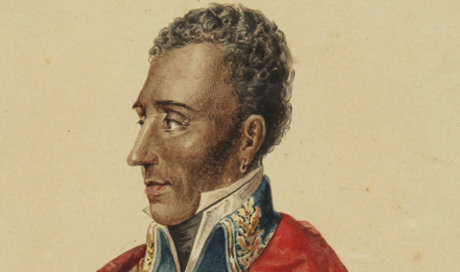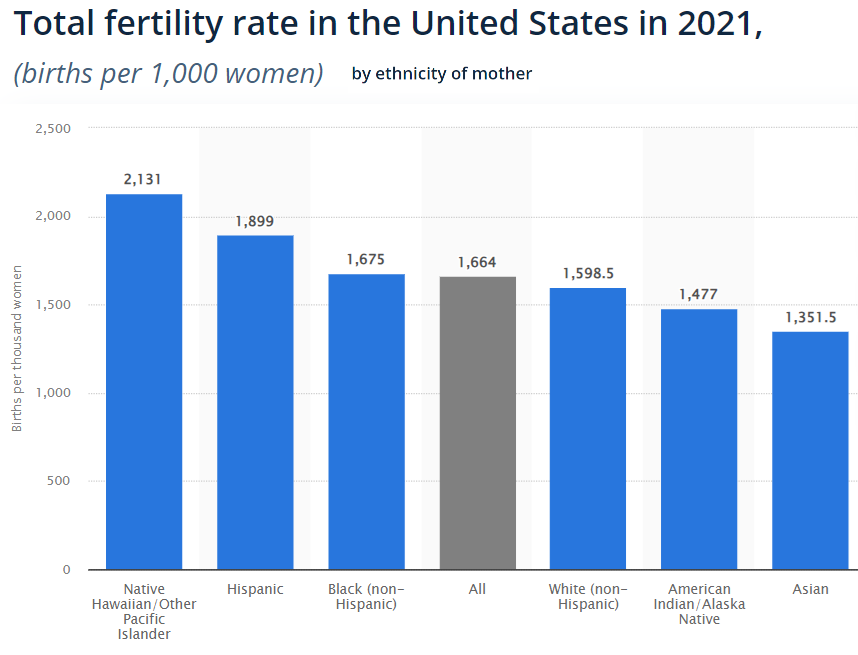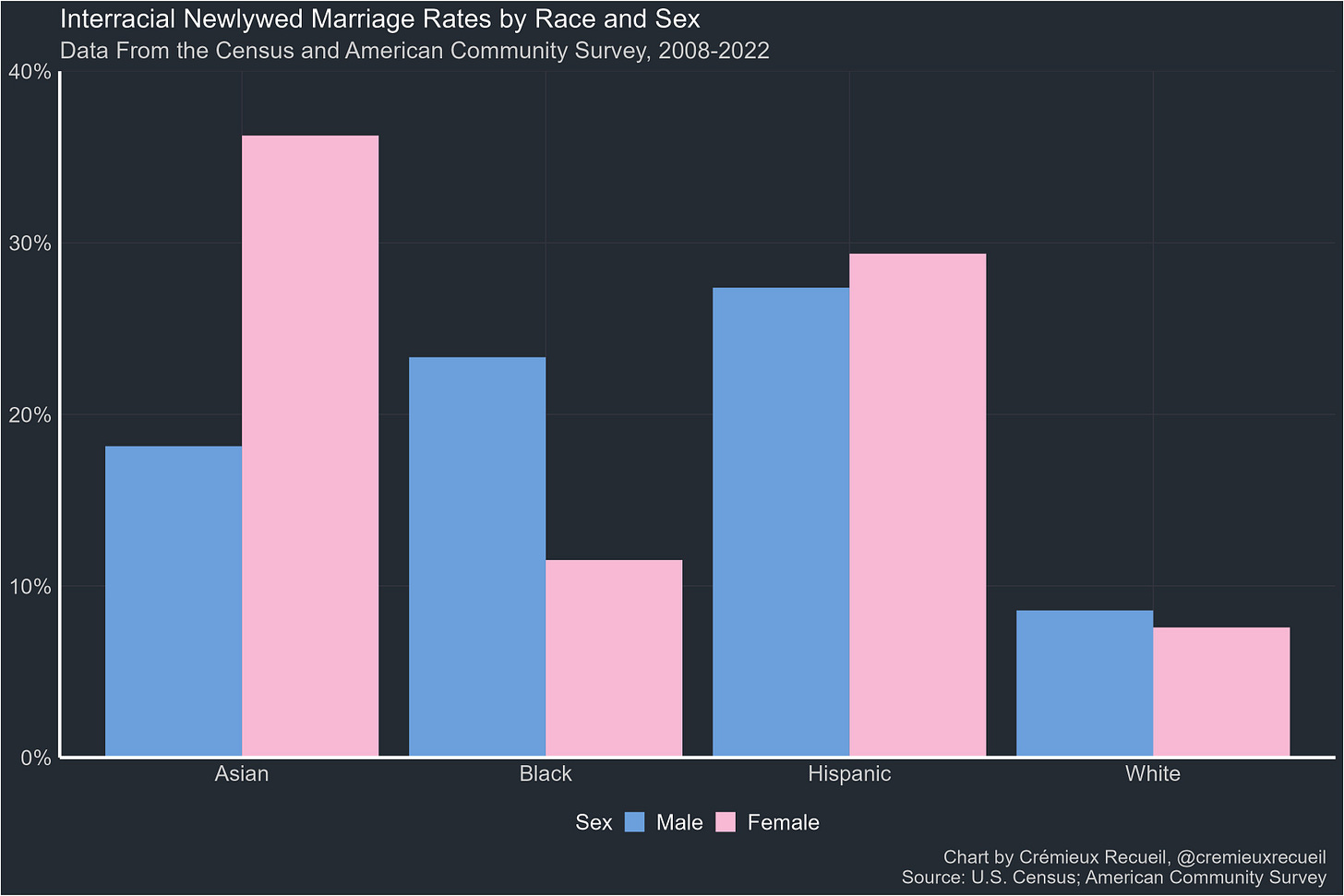White demographic decline refers to two phenomena: the decrease in the absolute number of white people, but more dramatically, the decrease in whites as a proportion of the total population.
Alarmists have referred to this phenomena as “white genocide.” Supposedly, once the white population drops below a certain threshold, whites will be vulnerable to violence, and total extinction.
The historical evidence for “white genocide” is primarily the example of Haiti. In Haiti, the white minority was supposedly entirely eliminated through a combination of rape and murder. The genocide is described as arbitrary (not making distinctions between different kinds of whites), fueled by pure racial hatred without any cause, non-ideological, biologically determined by a black propensity for violence, and was a purely black-vs-white affair. I will disprove all of these points, and provide more reasonable projections of the future with reference to both South Africa and Hawaii.
Background
One of the reasons why European colonialists in Haiti were so dependent on African slave labor is due to the presence of malaria. Malaria is a disease borne by mosquitos, and it is transmitted by blood. Between 10% to 45% of Africans have sickle cell anemia, which is a genetic adaptation which helps prevent the spread of malaria. Just as Native Americans were vulnerable to smallpox, while Europeans were much more immune, so too were Africans more immune to malaria, while Europeans were more vulnerable.
Throughout the Haitian Revolution, white soldiers died in high numbers due to malaria. When assessing the Haitian Revolution as a model for future racial conflict, it must be kept in mind that the biggest killer of French soldiers was malaria and yellow fever1 — not enemy combatants. With modern medicine, the war may have dragged on for an additional 12 years.
Arbitrary and Without Cause
Slavery is not a monolith. Greek and Roman slavery included highly educated tutors who would be entrusted with the moral inculcation of aristocratic children. Unfortunately, in Haiti, slavery was not so civilized. In fact, slavery in Haiti was one of the history’s most brutal experiences. Black violence toward white colonialists was not arbitrary or without cause, but was a direct result of and proportionate to the atrocities committed by French Catholics in Haiti.
In Protestant areas of the American south, slavery was a much different institution. Slave owners were encouraged to bring their slaves to church, to educate their slaves, and to treat them humanely. This was a result of the egalitarianism inherent to the Protestant ethos. On the other hand, the French Catholics of Haiti were inspired by centuries of Catholic serfdom and the “great chain of being” which reinforced concepts of inferior and superior humans. While atrocities occurred in both the American south and in Haiti, the scale, scope, and intensity of what occurred in the southern states was mitigated by the humanitarian influence of Protestantism. By contrast, French Catholicism was much harsher.
Black vs White
The Haitian War of Independence was not black versus white. Instead, several white groups were recognized as exempt from retribution, including Poles and Germans, who were categorized in the Haitian constitution as “black” for legal purposes. For centuries afterwards, these German Haitians played an important role in the Haitian economy. By 1910, 200 Germans controlled 80% of Haiti’s international trade. This only ended in 1915, when America invaded the island and attacked the Germans, and again during WWII.
It is undeniable that Haitian revolutionaries did not attempt to kill all white people, and made a clear distinction between French slave owners and Polish and German whites. But on the other side, the picture is even less racialized. The White French slave owners were not fighting a war against black Haitians, but against Spanish and British forces who supplied the revolutionaries. In this sense, the Revolution parallels the Rhodesian Bush War, where Soviet and American imperial pressure was the decisive element. The Haitian Revolution should not be thought of as a war of white versus black, but as a proxy war between white empires, with black troops acting much as Ukrainians or Gazans are used today.
Ideological Determinism
Contrary to the theory of biologically determined racial conflict, the Haitian Revolution was inspired directly by the revolutionary ideology which exploded two years prior. Haitians were not divided strictly into two camps. Rather, Haiti was divided between three factions: whites, blacks, and gens de couleur libres, or free people of color. In South Africa and Louisiana, we can also speak of “colored” people as a third or intermediate category between black and white.
During the Siege of Savannah in 1779, 545 mixed-race Haitians lead by a white commander, Charles Hector, fought under the flag of the Kingdom of France in favor of the American Revolution. At the age of 12, Henri Christophe participated in the battle as a drummer boy, and he would later go on to become a general in the Haitian Revolution. While Haiti was an extremely racist colony, it provided many of its non-white residents with opportunities for advancement both militarily and financially.
For example, Julien Raimond, a colored man, owned 100 slaves and was one of the richest men in the colony. Prior to the Haitian Revolution, Raimond was part of an organization known as la Société des Amis des Noirs (Society of the Friends of the Blacks), which was founded in 1788, just one year before the French Revolution broke out.
Another member of the Society, Vincent Ogé, was of half-white and half-colored ancestry. Like Raimond, Ogé's family owned a slave plantation, and like Raimond, Ogé became one of the richest mixed-race individuals in Haiti. However, Ogé fell deeply into debt, and this prompted him to move to France, where he joined the Revolution in 1789. Ogé then made a trip to London, where he met with Thomas Clarkson. Clarkson was a British propagandist who claimed to have interviewed more than 20,000 sailors in an effort to churn out an endless stream of anti-slavery tracts. Ogé may have been seeking financial support for his return to Haiti, possibly from Freemasonic networks.2
After returning to Haiti, Ogé staged a rebellion with 300 soldiers of color. It is important to note that at this point, Ogé’s revolt was less motivated by a desire for total racial equality, and more specifically by the demand for rights for free colored people. The soldiers which fought for him were not black, but colored.
When Ogé was defeated and captured, he was "broken by the wheel." This involved tying an individual down and dropping a heavy wooden wheel on their limbs to break their bones. In the presence of the colonial assembly, he was decapitated and his head was placed, in the manner of Vlad the Impaler, on the pike. Six months later, the Haitian Revolution began.
Had the white colonists wanted to keep power, they could have formed an alliance with the free men of color, who also owned slaves. However, the recalcitrance of the whites to form such an alliance led to the Revolution. This was not a biologically determined event, but a historically and ideologically contingent event. In fact, the tension between the coloreds and blacks in Haiti persisted through the presidency of François Duvalier, who was elected in 1957 on a platform of redistributing power from the coloreds to the blacks.
Despite the reluctance of whites to embrace colored Haitians as allies, the tensions between black and colored Haitians was so great that it led to the outbreak of a civil war between factions in the Revolution in 1799. Known as the War of Knives or War of the South, it was conducted between Toussaint Louverture, a black former slave who controlled northern Haiti, and André Rigaud, a colored military leader who controlled the south. When Rigaud was defeated and exiled, some estimates of the massacre of colored people reaches 10,000, although other reports claim this is exaggerated.
By 1802, with the war almost over, whites under the leadership of Charles Leclerc did recognize the necessity of allying with biracial or colored people. However, Leclerc soon botched this alliance when it was indicated that he intended to finish the war by killing all blacks above the age of 12 and reinstituting slavery. This caused his colored generals, such as Rigaud, Alexandre Pétion, and Jean-Pierre Boyer to abandon him and join the blacks, destroying the possibility of a white-colored alliance.
The Role of Vodou
Haiti was never fully Christianized under Catholicism. The religious divide between French Catholics and African Vodou practitioners pre-existed French revolutionary sentiment, and also serves as an important factor in the success of the uprising.
Dutty Boukman was a Vodou priest. On the eve of the revolution, he reportedly said the following:
The Good Lord who created the sun which lights us from above, which raises the sea and makes the thunder roar — listen well, all of you — this god, hidden in the clouds, watches us. He sees what the white people do. The god of the white people demands from them crimes; our god asks for good deeds. But this god who is so good demands vengeance! He will direct our hands; he will aid us. Throw away the image of the god of the whites, who thirsts for our tears, and listen to the liberty that speaks in all our hearts!3
There is a clear polytheism here and opposition to Catholicism. The Catholic church would essentially be exiled from the country until 1860, at which point a “re-Christianization” began, to the point now where the majority of Haitians outwardly identify as Catholic. Vodou today exists as a syncretized system. However, during the Revolution, this divide was much more explicit. Part of the reason for this is that priests such as Boukman were themselves born in Africa and had a distinct and direct connection to pre-Christian religions.
Summary
When the Revolution began, there were 40,000 whites in Haiti. After 12 years of war, in 1804, the remaining three to four thousand whites were massacred. This massacre was an entirely unnecessary tragedy, which could have been avoided in the following ways:
Thorough conversion of the black population to Christianity, to prevent the use of Vodou as a revolutionary tool.
Firmer regulation of slavery to prevent the most egregious abuses.
Successful white alliance with the colored population, by guaranteeing their rights as free men.
Restriction of British and Spanish involvement, which included arming the rebels and the Blockade of Saint-Domingue by John Loring.
In the first three categories, the French failed religiously, morally, and legally. In the fourth case, the French failed militarily to prevent foreign interference. If the war was truly “white versus black,” then there would have been no British or Spanish involvement. The involvement of the British and Spanish shows that even when outnumbered 1 to 10, the Haitian Revolution may not have been successful without foreign intervention.
A Hawaiian Future
Between 1970 and 2000, the white population of Hawaii dropped precipitously, from around 40% to just above 20%. However, since 2000, the population has remained relatively stable over the last 20 years. Historically, the white population of Hawaii, dating back to 1900, was generally closer to 20%, and the increase to 40% between 1950 and 1970 was mostly due to mass immigration of whites from the mainland.4
Meanwhile, over the same period, the white South African population has dropped from around 20% to less than 10%. Although white demographic decline (WDD) in both areas has been extremely similar (a decline of roughly 50%), the resulting conditions are very different.
WDD in Hawaii has not resulted in economic disaster, nor in an increase in crime. The necessary conclusion is that not all WDD is equal. Some WDD results in poverty and violence, while other forms of WDD result in wealth and peace.
Ideologically, South Africa’s affirmative action policies have created a gigantic corrupt bureaucracy which is sucking the country dry, creating massive unemployment, and leading to an unending stream of power outages and dysfunction. On the other hand, culturally and ethnically, Hawaii is only 2% black, whereas South Africa is 81% black,
The black population of America currently has a fertility rate below replacement level. Additionally, between 10-20% of blacks intermarry.
Accordingly, the single-race black fertility rate is closer to 1.5 than 1.7, making it almost indistinguishable from the white fertility rate. In fact, black Americans are experiencing Black Demographic Decline.

What about immigration from Africa? As it turns out, America is still receiving more immigration from Europe than it is from Africa. Additionally, African immigration numbers have to be divided between black Africans, north Africans, and white South Africans, of which there are 4.6 million.
Conclusion
Black Americans are on track to experience the same level of demographic decline as white Americans. Immigration from Africa is not likely to change this fact, barring some extreme change in policy. While Hispanic immigration is on track to make America a majority Hispanic country, the resulting country will look much more like California or Hawaii than like South Africa or Haiti.
Due to the way in which America classifies people through the one drop rule, many of the people who identify as black in 2050 may only be half black. By this logic, we can assume that America will be less black in 2050 than it is today. America is not turning into South Africa or Haiti — it is turning into California and Hawaii.
This is not something to fear or celebrate, but it is a factual refutation of the “white genocide” conspiracy theory. White Demographic Decline is real, and the factors behind it are complicated. Some leftists cheer it on, and some corporate interests might favor it. However, it is not likely to lead to “white extinction” or anything similar.
Fear mongering over white genocide fits into a multi-thousand year old trope of apocalyptic thinking. Stanislav Grof identifies this “end of the world” mania with the externalization of personal crisis. White Christian conservatives are undergoing a personal crisis where their ideology is declining. It is easier for them to externalize these fears and scapegoat “the rising tide of color” than examine the failures of their own crumbling worldview.
As less than 10% of the population of Haiti, whites ruled. Today, the richest billionaires in America are white or Jewish. Demographics are not destiny. Minorities can and do often survive and thrive even when surrounded by hostile ethnic groups. The Jewish survival of the crusades, expulsions and pogroms is a testament to that ability.
The ethnic hostility of the future is not to be divided by skin color, but rather between different white ethnicities. This racial bifurcation of whites will result in two ethnically distinct groups who, as in the Second World War, will engage in international conflict. Just as the Haitian Revolution was really a Spanish and British operation against the French, with blacks as proxies, “anti-white” sentiment is a proxy by liberal whites against conservative whites.
Charles Leclerc died of Yellow Fever during the invasion of 1802 to re-take Haiti.
According to Robin Blackburn, Ogé was sympathetic to the Freemasons. (Assumed Identities: The Meanings of Race in the Atlantic World. Garrigus, John, 2010)
Claiming the International (2013, Arlene & David Tickner). Page 147.
Part of this trend may have been spurred on by popular culture. Bing Crosby’s “Blue Hawaii” (1937) stood at the top of the charts for 13 weeks, and won the Academy Award for Best Original Song. It was featured in the movie Waikiki Wedding, alongside songs like "Sweet Leilani," "In a Little Hula Heaven." Teenagers who saw the film would have participated in the first wave of immigration in 1947, and finished retiring there by 1977. The film was produced by Arthur Hornblow Jr., who served in the Military Intelligence Division during WWI. One could speculate that Hornblow was directed by the government to produce the film in order to shore up American colonization of Hawaii — which was extremely important, considering that Japan would attack Hawaii just five years later.















